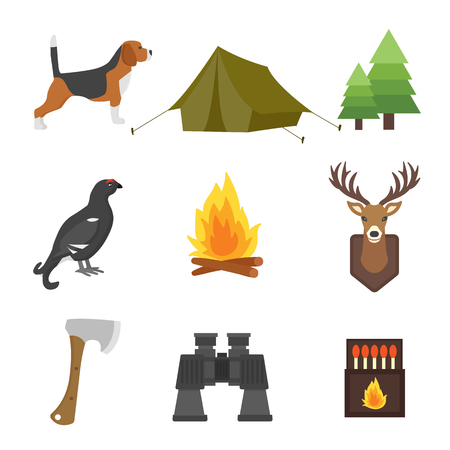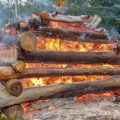Introduction to Bushcraft in the UK
Bushcraft, at its core, is the practice of thriving in the natural environment using traditional skills and tools. In the UK, bushcraft has gained a devoted following among outdoor enthusiasts who are eager to reconnect with nature, learn practical survival skills, and embrace self-sufficiency. However, wild camping and bushcraft here come with unique considerations that set them apart from similar pursuits elsewhere. The UK’s varied landscapes—from ancient woodlands and rolling hills to rugged moorlands—offer abundant opportunities for bushcraft activities, but also demand a respectful approach due to their ecological sensitivity and longstanding land access traditions.
Respectful wild camping is central to responsible bushcraft in the UK. Unlike some countries where wild camping is widely permitted, much of the land in England and Wales is privately owned or protected by strict bylaws. Scotland’s more liberal access rights under the Land Reform (Scotland) Act 2003 allow wild camping on most unenclosed land, but even there, campers are expected to follow the Scottish Outdoor Access Code. Understanding these local laws is essential not just for legal compliance but also for preserving the goodwill of landowners and protecting fragile environments for future generations. Adopting Leave No Trace principles, seeking permission where necessary, and minimising impact on wildlife and habitats are all integral aspects of ethical bushcraft in the UK.
This guide aims to provide a comprehensive overview of bushcraft tools and kits specifically suited for wild camping in the UK context. Whether you’re a seasoned woodsman or an enthusiastic beginner, understanding how to choose appropriate gear—and how to use it responsibly—will help you make the most of your outdoor adventures while respecting the land and its communities.
Essential Cutting Tools: Knives, Axes, and Saws
When it comes to bushcraft and wild camping in the UK, few tools are as vital as cutting implements. Whether you’re crafting shelter pegs, processing firewood, or preparing food, having the right knife, axe, or saw is indispensable. However, before selecting your kit, it’s crucial to understand the legalities specific to Britain and recognise trusted traditional brands that have stood the test of time in British outdoor culture.
UK Legal Considerations for Cutting Tools
The UK has stringent laws regarding the carrying and use of knives and other sharp tools in public spaces. For wild campers and bushcrafters, it’s essential to comply with these regulations to avoid legal trouble. The following table summarises key points:
| Tool Type | Legal Status (Public) | Key Restrictions |
|---|---|---|
| Folding Knife (non-locking) | Permitted | Blade must be < 3 inches (7.62cm) |
| Fixed-Blade Knife / Locking Knife | Not Permitted without Good Reason* | Good reason may include camping/hiking but discretion advised; best kept packed until needed |
| Axe / Hatchet / Saw | Not Permitted without Good Reason* | As above; transport safely and use only on site |
* ‘Good reason’ is assessed case by case by authorities. Always act responsibly and respectfully when carrying tools.
Must-Have Cutting Tools for Bushcraft in Britain
Bushcraft demands robust, versatile cutting tools. Here’s a detailed look at each type:
1. Knives
- Bushcraft Knife: Typically a fixed-blade with a full tang for strength—ideal for carving, food prep, and general camp tasks.
- Pocket/Folding Knife: Legally easier to carry day-to-day; suitable for lighter tasks like whittling or small food prep.
- Traditional British Brands: Mora (though Swedish, widely used in the UK), Helle, Whitby Knives, Sheffield-based makers (e.g., Joseph Rodgers & Sons)
2. Axes and Hatchets
- Camping Axe/Hatchet: Handy for splitting wood and heavier tasks; choose models with sturdy hickory handles or modern composites.
- British Standouts: Gränsfors Bruk (Swedish but popular in the UK), Elwell (historic), Bulldog Tools (Wigan-based)
3. Saws
- Folding Saw: Compact and efficient for cutting branches or sawing firewood; safer than axes for beginners.
- Saw Options: Bahco Laplander (Swedish but beloved by UK bushcrafters), Silky (Japanese but common here), Draper Tools (UK-based)
Selecting Your Kit: Balancing Functionality & Tradition
Your choice of cutting tools should reflect both your planned activities and an appreciation for local heritage. Many British outdoor enthusiasts favour brands with a history of reliability, often passed down through generations. When assembling your kit, consider weight, durability, ease of sharpening in the field, and—most importantly—compliance with UK law.
![]()
3. Fire Lighting: Kits, Techniques, and Best Practises
When it comes to wild camping in the UK, reliable fire lighting is both a necessity and an art, especially given our famously unpredictable and often wet weather. Here’s a practical overview of the most dependable tools and techniques, along with some best practices tailored for British conditions.
Essential Fire-Starting Tools for the UK
A robust fire-lighting kit is fundamental. While traditional matches are lightweight, they are notoriously unreliable in damp or windy settings. Instead, most seasoned bushcrafters in Britain favour ferrocerium rods (commonly called “ferro rods” or “firesteels”), which can produce sparks even when wet. Coupled with a sturdy striker—preferably steel—they’re a solid choice year-round.
Waterproof storm matches are another popular back-up. Unlike regular matches, these are wind-resistant and will continue to burn even after being submerged briefly. Lighters (such as the classic Zippo or gas-based models) are convenient but can struggle in persistent rain or cold; always carry at least one alternative ignition source.
Tinder Selection: Navigating Damp Conditions
In the UK’s moist environments, natural tinder like dry grass, birch bark, or punk wood is rarely bone-dry. Many campers therefore supplement their kits with reliable man-made tinders such as cotton wool smeared with petroleum jelly, char cloth, or commercially available firelighters. If you prefer foraging, keep your eye out for silver birch bark—it’s naturally oily and lights easily even when slightly damp.
Top Tip:
Carry your tinder in waterproof containers or sealable bags to keep it dry throughout your trip. A simple zip-lock bag can make all the difference on a rainy Lake District evening.
Techniques for Successful Ignition
Building a fire in soggy conditions requires patience and preparation. Start small: create a nest of your driest available tinder at the base, then carefully layer kindling—twigs no thicker than a pencil—above it. Keep your initial pile compact to conserve heat and encourage ignition.
A feather stick (a stick shaved into thin curls using a knife) is an excellent way to increase your chances of success with damp wood. Practice this skill before heading out—it’s invaluable on misty mornings in Snowdonia or the Highlands.
Best Practices: Safety and Leave No Trace
- Always check local regulations on open fires—many UK wild camping spots restrict ground fires due to conservation concerns.
- Use a raised fire pit or portable stove where possible to minimise impact.
- Extinguish all fires completely before leaving camp; douse with water and scatter cold ashes responsibly.
In summary:
Packing redundant fire-lighting methods and respecting the unique challenges of the British climate ensures not only your warmth and comfort but also the preservation of our wild spaces for future adventurers.
4. Shelter and Sleeping Gear for the British Wilds
When wild camping in the UK, where the weather is famously unpredictable, choosing the right shelter and sleeping gear is vital for both comfort and safety. From dense Scottish forests to exposed Welsh hillsides, the correct equipment ensures you remain dry, warm, and well-rested regardless of what the British climate throws your way.
Shelter Options: Tents, Tarps, and Bivvy Bags
Wild campers in Britain tend to favour lightweight yet robust shelters that can withstand rain, wind, and occasional cold snaps. Below is a comparison of the most common shelter types for bushcraft camping:
| Shelter Type | Pros | Cons | Best For |
|---|---|---|---|
| Tent (3-season) | Weatherproof, bug protection, privacy | Heavier, bulkier, slower setup | Wet or windy conditions, highland sites |
| Tarp | Lightweight, versatile setups, good ventilation | Less protection from insects and wind-driven rain | Experienced campers, woodland areas |
| Bivvy Bag | Ultra-lightweight, minimal footprint, quick deployment | Condensation risk, limited space | Stealth camping, solo trips |
| Hammock with tarp cover | No ground impact, excellent drainage in wet weather | Requires suitable trees, learning curve for setup | Damp woodlands, uneven terrain |
Selecting a Sleeping Bag for UK Conditions
The UK’s climate means nights can be chilly even in summer. Selecting a sleeping bag suited to the season and region is crucial. Look for sleeping bags with:
- A comfort rating appropriate for spring through autumn (typically 0°C to 5°C)
- Synthetic insulation for damp conditions or down fill with hydrophobic treatment if weight-saving is essential
- Mummy shape for heat retention and packability
- A reliable hood and draft collar to block out cold air drafts on blustery nights
Recommended Sleeping Bag Features Table:
| Feature | Why It Matters in the UK Wilds? |
|---|---|
| Water-resistant outer shell | Keeps moisture at bay during unexpected showers or condensation build-up inside tents or bivvies. |
| Packed size & weight under 2kg | Eases transport on foot across varied terrain typical of British landscapes. |
| Left/right zip options | Makes it easier to vent or connect bags for couples in changeable temperatures. |
The Versatility of Hammocks in British Woodlands
A hammock setup paired with a waterproof tarp provides a comfortable night’s sleep off the damp ground—ideal in ancient woodlands or river valleys where flat space is scarce. To adapt hammocks to the UK’s often wet weather:
- Add an underquilt or closed-cell foam mat beneath you to prevent ‘cold back’ syndrome caused by air circulation below.
- Select mosquito nets during midge season (notably in Scotland) to maintain comfort and sanity.
Conclusion: Tailoring Your Sleep System to Local Conditions
Your choice of shelter and sleeping system should reflect not only personal preference but also the realities of Britain’s ever-changing outdoors. Prioritise adaptability—carry gear that handles rain as readily as a clear summer night. Whether you favour a classic tent pitched on Dartmoor or a hammock strung between Lake District oaks, investing thought into your sleep setup pays dividends on every wild camp.
5. Water Procurement and Purification Methods
Identifying Water Sources in the British Countryside
When wild camping across the UK, access to clean water is vital for both safety and comfort. The British countryside offers a range of natural water sources, including streams, rivers, lakes, springs, and even rainfall. However, not all sources are equally safe or accessible. Fast-flowing upland streams and springs are generally considered safer options due to reduced contamination risk, while stagnant ponds or slow-moving water should be avoided if possible. Always scout upstream for signs of pollution such as agricultural runoff or livestock activity before collecting water.
Essential Tools for Water Collection
Carrying lightweight and practical tools can make water collection more efficient and hygienic. A collapsible water bottle or dedicated hydration bladder is indispensable for storage, while a simple mug or cup aids in scooping from shallow sources. A bandana or coffee filter can serve as a pre-filter to remove debris before purification. For those venturing into areas with limited access to surface water, consider packing a compact folding bucket to transport water back to your campsite.
Modern Purification Techniques
Chemical Treatments
Water purification tablets (such as chlorine dioxide) are widely used among UK bushcrafters for their ease of use and compact nature. They effectively neutralise bacteria, viruses, and many protozoa found in British waters, though they may not remove chemical contaminants.
Filtration Devices
Lightweight pump filters and straw-type filters have become staples in many wild camping kits. Brands like Sawyer and Lifestraw offer reliable options that can process thousands of litres of water before needing replacement. These filters physically remove bacteria and protozoa but may require additional treatment for viruses if you’re particularly cautious.
Boiling
Boiling remains one of the most trustworthy methods for purifying water in the field. Bringing water to a rolling boil for at least one minute will kill harmful microorganisms found in most UK freshwater sources. Portable gas stoves or campfires (where permitted) can be used to boil collected water efficiently.
Rainwater Harvesting
The unpredictable British weather can actually work in your favour when it comes to collecting rainwater—a relatively clean source if gathered correctly. Use tarps or ponchos to direct rainwater into clean containers during downpours, ensuring all surfaces are free from contamination beforehand.
Best Practices and Safety Tips
- Always treat any collected water before drinking, regardless of how clear it appears.
- Carry multiple purification methods for redundancy—equipment failure happens.
- Mark reliable water sources on your OS map ahead of time, especially when exploring remote areas like Dartmoor or the Cairngorms.
By understanding the variety of water sources available in the UK’s wild spaces and equipping yourself with effective purification tools, you’ll ensure both hydration and safety throughout your bushcraft adventures.
6. Navigation and Communication Tools
When wild camping in the UK, reliable navigation and communication tools are as essential as your shelter or knife. The British landscape—ranging from dense woodlands and sprawling moorlands to remote hills—demands careful planning and solid kit choices to keep you safe and on track. Here’s what you need to know about equipping yourself for confident travel off the beaten path.
OS Maps: The Foundation of UK Navigation
Ordnance Survey (OS) maps are the gold standard for navigating Britain’s countryside. Unlike digital mapping apps, OS maps offer detailed topographical information, public rights of way, and features specific to UK terrain. Whether you opt for Explorer (1:25,000 scale) for fine detail or Landranger (1:50,000 scale) for covering greater distances, always pack a waterproof map case to protect against the UK’s notorious weather.
Compasses: Navigational Backbone
A quality compass—such as those by Silva or Suunto—is indispensable in the British wilds, especially when visibility drops in foggy or wooded areas. Get comfortable with basic compass skills: setting bearings, triangulating positions, and orienting your map. In areas like Dartmoor or the Scottish Highlands where paths can disappear, compass proficiency is not just useful but vital.
Emergency Signals and Communication Devices
In remote areas where mobile signal is patchy, traditional emergency signalling methods remain important. A loud whistle (such as the internationally recognised six-blast distress signal) is lightweight but effective. Carrying a mirror for visual signals can also be a lifesaver on open moors.
For longer trips or more isolated regions, consider investing in a Personal Locator Beacon (PLB) or satellite messenger—devices now trusted by many British hillwalkers and bushcrafters to alert emergency services if things go wrong.
While mobile phones are widely used, don’t rely solely on them; battery life and coverage are often unreliable away from towns and villages.
Top Tip: Always Leave Your Route Details
No matter how well-equipped you are, always inform someone of your intended route and expected return time before heading out. This classic British safety practice ensures help will be alerted if you run into trouble.
With these navigation and communication essentials at hand—and the knowledge to use them—you can confidently explore the UK’s wilder corners while staying safe and connected.
7. Field-tested Bushcraft Kits: Packing for Success
When it comes to wild camping in the UK, there’s no substitute for field experience. Over the years, British bushcrafters have refined their kits through countless nights under canvas and open skies. While every adventurer’s loadout will differ slightly, some essentials appear time and again in tried-and-tested bushcraft kits. For example, many seasoned campers swear by a classic combination of a robust fixed-blade knife (often a Mora or similar Scandinavian style), folding saw, fire steel, billy can, lightweight tarp, basha or poncho, and a compact first aid kit. Some prefer traditional tools like the Gränsfors Bruk Small Forest Axe, which balances portability with practical chopping power—a nod to the UK’s woodland heritage.
Balancing Tradition with Modern Innovation
The key to an effective wild camping kit is striking the right balance between time-honoured gear and modern materials. While a waxed cotton haversack or wool blanket brings nostalgic appeal and proven reliability in damp British weather, ultralight synthetic sleeping bags and titanium cookware can reduce pack weight significantly—an important consideration when traversing the fells or moorlands. Many UK bushcrafters recommend testing your kit close to home before venturing into remote areas; this allows you to refine what’s genuinely essential versus what’s merely nice to have.
Examples from Experienced UK Bushcrafters
Field reports often highlight the value of layering clothing using merino wool base layers and waterproof shells—ideal for unpredictable British weather. A 58 Pattern water bottle and mug remain popular due to their durability and adaptability over open fires. Meanwhile, modern head torches with red light modes help preserve night vision on dark woodland paths. Another favourite is the humble DD Hammocks tarp, praised for its versatility whether strung between trees or used as an emergency bivvy shelter.
Practical Packing Advice
Start with core survival priorities: shelter, fire, water, food, navigation, and first aid. Build your kit around these functions using a mix of traditional items—like a sturdy canvas bag or leather pouch—and newer innovations such as compact water filters or reflective emergency blankets. Always consider local UK conditions: persistent rain calls for robust waterproofing; ticks and midges demand effective repellent; and respect for Leave No Trace principles means packing out all waste. Ultimately, success in wild camping comes from thoughtful preparation—a blend of heritage wisdom and contemporary design that keeps you safe, comfortable, and ready for whatever the British outdoors might throw at you.


